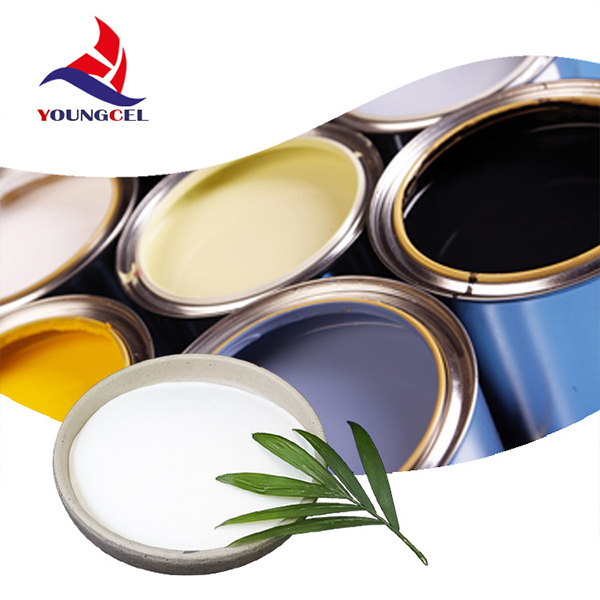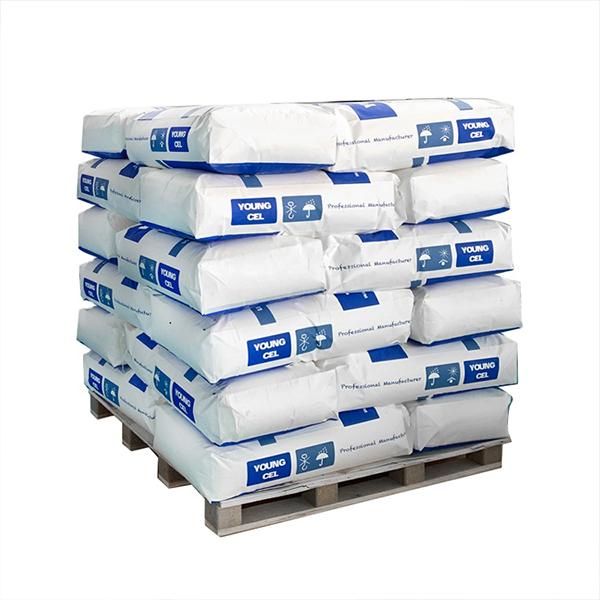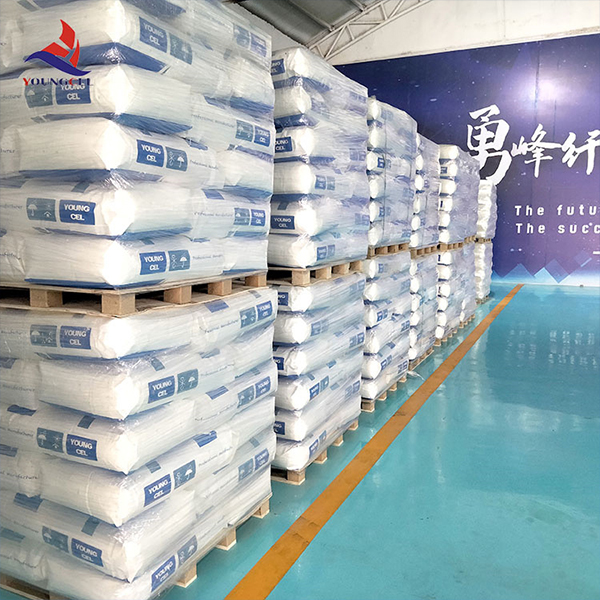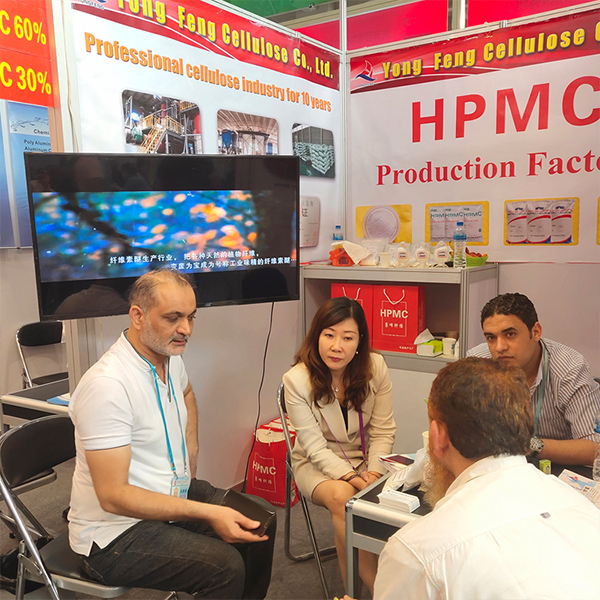Introduction to Hydroxypropyl Methyl Cellulose for Advanced Painting Formulations
In the rapidly evolving coatings industry, the demand for high-performance, environmentally friendly, and versatile additives is continuously growing. Among these, Hydroxypropyl Methyl Cellulose Powder Used For Painting Additives stands out as a critical component. This sophisticated cellulosic ether is derived from natural cellulose and chemically modified to impart a unique set of properties essential for modern paint and coating formulations. Its primary functions include rheology modification, thickening, water retention, film formation, and dispersion stabilization, all contributing significantly to the aesthetic appeal, durability, and application characteristics of various paints.
This detailed article explores the technical intricacies, application benefits, and market significance of HPMC powder in the painting industry. We will delve into its manufacturing processes, critical technical specifications, diverse application scenarios, and how it addresses contemporary industry challenges, providing valuable insights for B2B decision-makers and technical professionals seeking to optimize their paint formulations.
Current Industry Trends and Market Dynamics
The global paint and coatings market is experiencing significant shifts driven by regulatory pressures, technological advancements, and evolving consumer preferences. Key trends include a strong emphasis on sustainability, the development of low-VOC (Volatile Organic Compound) and zero-VOC formulations, and the increasing demand for high-performance coatings that offer enhanced durability, weather resistance, and aesthetic appeal. In this context, cellulose ethers, particularly Hydroxypropyl Methyl Cellulose Powder Used For Painting Additives, play a pivotal role.
The market is seeing a move towards water-based systems, where HPMC is indispensable for achieving desired rheological properties without compromising environmental standards. Furthermore, advancements in specialized coatings, such as those for automotive, industrial, and architectural applications, necessitate additives that can deliver precise control over viscosity, sag resistance, and open time. Manufacturers are continually innovating to produce HPMC grades with tailored molecular weights and substitution patterns to meet these nuanced requirements, ensuring optimal performance across a diverse range of paint types.
- Eco-Friendly Formulations: HPMC supports the development of sustainable, water-based paints by providing excellent thickening and water retention without relying on solvent-based systems.
- Enhanced Performance: Growing demand for paints with superior scrub resistance, adhesion, and anti-spattering properties drives the need for high-quality rheology modifiers.
- Specialized Applications: Increasing use in textured paints, anti-corrosion coatings, and high-build architectural finishes.

Detailed Manufacturing Process Flow
The production of Hydroxypropyl Methyl Cellulose Powder Used For Painting Additives is a complex, multi-stage chemical synthesis process designed to yield a highly pure and consistent product. The core material is natural cellulose, typically sourced from wood pulp or cotton linters, known for its high alpha-cellulose content. The manufacturing process meticulously controls parameters to achieve specific degrees of substitution (DS) and molecular weight, which dictate the final product's performance characteristics in paint applications.
Process Steps:
- Cellulose Preparation and Alkalization: High-purity cellulose is first pulverized and then treated with a concentrated caustic soda (sodium hydroxide) solution. This process, known as mercerization or alkalization, converts the cellulose into alkali cellulose, opening up its crystalline structure and making the hydroxyl groups more reactive for subsequent etherification. This is a critical step for achieving uniform substitution.
- Etherification Reaction: The alkali cellulose is then reacted with two primary etherifying agents in a carefully controlled reactor under elevated temperature and pressure:
- Methyl Chloride: Introduces methyl groups (-OCH₃) onto the cellulose backbone, forming methyl cellulose.
- Propylene Oxide: Introduces hydroxypropyl groups (-OCH₂CH(OH)CH₃), forming hydroxypropyl cellulose.
- Neutralization and Washing: After the etherification, the reaction mixture is neutralized with an acid (e.g., acetic acid) to stop the reaction and remove any residual alkali. The crude HPMC is then subjected to extensive hot water washing to eliminate by-products (primarily sodium chloride and propylene glycol) and unreacted reagents. This purification step is crucial for achieving high purity and low ash content, which are vital for paint stability and performance.
- Drying and Milling: The purified HPMC slurry is dewatered and then dried to a specific moisture content. Various drying methods, such as flash drying or spray drying, can be employed. The dried material is then milled and sieved to achieve the desired particle size distribution. Finer particle sizes generally lead to faster dissolution and improved rheological efficiency in paint formulations.
- Quality Control and Packaging: Throughout the entire process, rigorous quality control checks are performed. Testing standards typically adhere to international norms like ISO 9001 for quality management and specific ASTM or internal methods for product specifications such as viscosity, moisture content, pH, and ash content. Products are packed in moisture-proof bags, ensuring a long service life of up to 24 months when stored correctly.
Target Industries and Advantages:
The primary target industries for this specialized HPMC include architectural coatings, industrial paints, decorative coatings, and specialty finishes. In these applications, HPMC offers significant advantages:
- Rheology Control: Provides excellent sag resistance, anti-settling properties, and brushability.
- Water Retention: Extends open time, preventing rapid drying and improving film formation, especially in hot conditions.
- Dispersion Stability: Enhances the suspension of pigments and fillers, preventing hard settling and ensuring color consistency.
- Film Formation Improvement: Contributes to smoother, more uniform films with improved adhesion.
- Energy Saving: By improving application efficiency and reducing rework, HPMC indirectly contributes to energy savings in industrial painting processes.
- Corrosion Resistance (indirect): In primer formulations, improved film integrity provided by HPMC can enhance the overall barrier properties, contributing to better corrosion resistance of the coating system.

Technical Specifications and Performance Parameters
The performance of Hydroxypropyl Methyl Cellulose Powder Used For Painting Additives is highly dependent on its specific technical parameters. These parameters are meticulously controlled during manufacturing to ensure the product meets stringent industry requirements for various paint applications. Key characteristics include viscosity, degree of substitution, gelation temperature, and particle size.
Key Product Specifications (Example: Youngcel YC-HPMC Series)
These specifications are crucial for formulators to select the appropriate grade of HPMC for their specific paint requirements, ensuring optimal performance and consistency. Youngcel, for instance, offers various grades with tailored viscosities and substitution patterns to meet diverse application needs.

Versatile Application Scenarios in the Paint Industry
The adaptability of Hydroxypropyl Methyl Cellulose Powder Used For Painting Additives makes it indispensable across a broad spectrum of paint and coating applications. Its multifaceted properties address key challenges faced by paint manufacturers and applicators, from enhancing ease of application to improving the long-term integrity of the coating.
Key Application Areas:
- Architectural Coatings:
In interior and exterior wall paints, HPMC provides excellent thickening, preventing sag and improving brush and roller application. It ensures a uniform film build, reducing lap marks and spattering. Its water retention capabilities prolong the open time, crucial for achieving smooth, streak-free finishes, especially in large areas or challenging environmental conditions. It also contributes to enhanced scrub resistance, a key performance indicator for durable wall paints.
- Textured and High-Build Coatings:
For paints designed to create decorative textures or build significant film thickness, HPMC is vital for maintaining the structural integrity of the wet film. It prevents slump and cracking, allowing for controlled application of heavy-bodied paints. Its pseudoplastic rheology ensures easy workability under shear (e.g., trowel or spray) and rapid viscosity recovery for sag resistance once applied.
- Primers and Sealers:
HPMC enhances the adhesion and binding properties of primers, particularly on porous or challenging substrates. It improves the cohesion of the primer layer, reducing penetration into highly absorbent surfaces and ensuring a consistent base for topcoats. Its role in stabilizing pigment dispersion is also crucial for preventing settlement in stored primers.
- Industrial and Protective Coatings:
While often associated with architectural paints, specific grades of HPMC are used in certain industrial water-based protective coatings. Here, they aid in controlling application characteristics, preventing runoff on vertical surfaces, and improving film formation under challenging conditions. This is particularly relevant for coatings applied to metal structures or machinery where consistent film thickness is paramount for corrosion protection.
- Tile Adhesives and Grouts (Ancillary Application):
Though not strictly paint, the properties of HPMC (water retention, thickening, workability) extend to related construction materials, such as tile adhesives and cementitious grouts, where it significantly improves open time, adhesion strength, and slip resistance. This crossover highlights its versatility in diverse construction chemical formulations.

Technical Advantages and Performance Benefits
The judicious inclusion of Hydroxypropyl Methyl Cellulose Powder Used For Painting Additives in paint formulations yields a multitude of technical advantages that directly translate into superior product performance and ease of application. These benefits are critical for manufacturers seeking to differentiate their products in a competitive market.
Key Advantages:
- Excellent Rheology Modification: HPMC imparts pseudoplastic (shear-thinning) behavior to paints. This means the paint exhibits high viscosity at rest (preventing sag and settlement) but reduces viscosity under shear (during brushing, rolling, or spraying), allowing for easy application. Once the shear is removed, the viscosity quickly recovers, maintaining film thickness and preventing drips. This thixotropic behavior is essential for vertical application without run-off.
- Superior Water Retention: HPMC significantly enhances the water retention capacity of water-based paints. This extends the open time, which is the period during which the paint remains workable on the substrate before drying. Extended open time allows for better flow and leveling, minimizes brush marks, and ensures proper film formation, especially in warm or dry environments. It also prevents premature absorption of water into porous substrates.
- Enhanced Pigment and Filler Stability: The polymeric structure of HPMC aids in stabilizing pigment and filler dispersions, preventing their sedimentation or flocculation during storage. This ensures color consistency, reduces the need for extensive mixing before use, and maintains the paint's overall homogeneity.
- Improved Workability and Application Properties: HPMC improves the overall feel and ease of application. It contributes to better brush load, reduced spattering during roller application, and smoother flow and leveling. This results in fewer imperfections, improved coverage, and a more professional finish, enhancing user experience.
- Film Formation and Adhesion: By controlling water evaporation and promoting uniform film formation, HPMC indirectly contributes to improved film integrity and adhesion to various substrates. It helps create a continuous, defect-free coating that performs better in terms of durability and protection.
- Compatibility with Other Additives: HPMC exhibits good compatibility with a wide range of other paint additives, including dispersants, defoamers, biocides, and coalescing agents, allowing formulators flexibility in achieving complex performance profiles.
Authoritative Certifications & Trustworthiness:
Reputable manufacturers often hold ISO 9001 certifications, ensuring consistent quality management throughout the production of HPMC. Furthermore, products designed for specific markets may adhere to regional standards (e.g., REACH compliance in Europe) or meet specific food-grade (e.g., FDA/EU food contact) or pharmaceutical standards where applicable, although for painting additives, the primary focus is industrial performance and environmental safety. Such certifications underscore the supplier's commitment to quality and regulatory compliance, building substantial trust with B2B clients.
Vendor Comparison and Customized Solutions
Selecting the right supplier for Hydroxypropyl Methyl Cellulose Powder Used For Painting Additives is paramount for maintaining consistent paint quality and optimizing production efficiency. While many vendors offer HPMC, variations in raw material quality, manufacturing precision, and after-sales support can significantly impact end-product performance. A comparative analysis highlights the importance of choosing a partner that provides not only standard grades but also customized solutions.
Comparative Analysis of HPMC Vendors (Illustrative):
Customized Solutions:
The nuances of paint formulation often require more than off-the-shelf solutions. Leading HPMC suppliers like Youngcel understand that specific paint systems may demand unique rheological profiles, dissolution rates, or compatibility characteristics. Customization options typically involve:
- Tailored Viscosity Ranges: Adjusting the molecular weight during synthesis to achieve a precise viscosity at a given concentration, optimizing thickening efficiency for specific paint types (e.g., low viscosity for spray paints, high viscosity for textured coatings).
- Modified Gelation Temperatures: Fine-tuning the methyl/hydroxypropyl substitution ratio to alter the thermal gelation point, which can be critical for applications in extreme temperatures.
- Surface Treatments: Applying surface modifiers (e.g., glyoxalation) to delay dissolution and improve dispersion in water, preventing lumping when added to the mix. This is particularly useful in high-speed mixing applications.
- Particle Size Optimization: Milling to a specific particle size distribution to influence dissolution rate and ease of incorporation into paint batches, enhancing consistency and reducing processing time.
These customized approaches allow paint manufacturers to achieve optimal performance, reduce formulation costs, and gain a competitive edge by fine-tuning their products to exact market demands. This level of partnership is invaluable for innovation and problem-solving in complex chemical systems.

Application Case Studies and Customer Experience
Real-world application case studies provide tangible evidence of the performance and value delivered by Hydroxypropyl Methyl Cellulose Powder Used For Painting Additives. These examples highlight how the technical advantages translate into practical benefits for paint manufacturers and end-users.
Case Study 1: Enhancing Anti-Sag Properties in High-Build Architectural Paints
- Challenge: A major architectural paint manufacturer was struggling with sag and drip issues in their new line of high-build exterior acrylic paints, particularly on vertical surfaces. Existing cellulose ethers provided insufficient pseudoplasticity, leading to film defects and increased rework.
- Solution: Youngcel collaborated with the manufacturer to introduce a high-viscosity, glyoxal-treated HPMC grade with optimized methyl and hydroxypropyl substitution. The modified HPMC was incorporated at a dosage of 0.35% by weight.
- Results: The modified formulation demonstrated a 40% improvement in sag resistance (measured by ASTM D4400) without impacting brushability. The paint achieved a consistent 200-micron dry film thickness on vertical substrates, significantly reducing application defects and leading to a 15% reduction in material waste and rework. Customer feedback highlighted "markedly superior application ease and finish quality."
Case Study 2: Improving Open Time and Leveling in Water-Based Decorative Coatings
- Challenge: A decorative paint producer needed to extend the open time of their premium water-based interior paints to allow for longer working times and better flow/leveling, especially in arid climates. Rapid drying led to visible brush marks and poor film uniformity.
- Solution: A medium-viscosity HPMC grade with enhanced water retention capabilities was recommended. This specific grade was chosen for its optimal balance of thickening and water-holding capacity, minimizing surface skinning and extending the wet-edge time.
- Results: The paint's open time was extended by approximately 25-30% (verified by industry-standard drying time tests), allowing applicators more time for seamless blending and achieving a perfectly smooth finish. End-user reviews consistently praised the "exceptionally smooth finish" and "forgiving application." This led to a 10% increase in market share for the premium product line.
Customer Feedback Highlights:
- "The consistency and purity of Youngcel's HPMC have been unmatched, allowing us to maintain tight quality control over our entire paint production. Their technical support is always ready to assist with our most challenging formulations." - Head of R&D, Global Coatings Manufacturer
- "Switching to a higher-grade HPMC from Youngcel significantly reduced our raw material usage due to its superior thickening efficiency, leading to cost savings and a greener product." - Procurement Manager, European Paint Company

FAQ, Fulfillment, Warranty & Support
Frequently Asked Questions (FAQ):
- Q: What is the recommended dosage of HPMC in typical paint formulations?
- A: The optimal dosage varies significantly based on the desired viscosity, paint type (e.g., flat, semi-gloss), and other formulation components. Generally, it ranges from 0.2% to 0.7% by weight of the total paint formulation. We recommend starting with a trial dosage and adjusting based on rheological performance tests.
- Q: How does HPMC contribute to environmental sustainability in paints?
- A: HPMC is a naturally derived, biodegradable polymer. Its excellent performance allows for the formulation of high-quality water-based paints, significantly reducing the reliance on VOC-emitting organic solvents. This contributes to lower air pollution and improved indoor air quality, aligning with global green building initiatives.
- Q: What is the best method to incorporate HPMC into a paint batch?
- A: For optimal dispersion and to prevent lumping, HPMC powder should be slowly added to agitated water (preferably cold water) or a part of the mill base under high shear mixing. Glyoxal-treated HPMC grades can be added directly to cold water with stirring. It's crucial to allow sufficient time for full hydration, typically 30-60 minutes, to achieve the designed viscosity.
- Q: Are there different grades of HPMC for different paint types?
- A: Yes, HPMC is available in various grades differing in molecular weight (which dictates viscosity), degree of substitution, and surface treatment. Higher viscosity grades are suitable for textured or high-build paints, while medium viscosity is common for standard architectural coatings. Surface-treated grades are preferred for faster dissolution and easier incorporation in large-scale production. Consult with our technical team to select the most suitable grade for your specific application.
Lead Time and Fulfillment:
Youngcel maintains a robust supply chain and efficient production schedule to ensure timely delivery of Hydroxypropyl Methyl Cellulose Powder Used For Painting Additives. Standard lead times for common grades typically range from 2 to 4 weeks from order confirmation, depending on quantity and destination. For customized grades or very large orders, lead times will be confirmed at the time of quotation. We utilize a global logistics network to ensure reliable and cost-effective shipping worldwide. Emergency or expedited shipping options can be arranged upon request.
Warranty Commitments:
All Youngcel products, including our HPMC for painting additives, come with a standard 12-month warranty against manufacturing defects from the date of shipment, provided the product is stored and handled according to our recommendations. Our products are guaranteed to meet the specifications outlined in their respective Certificates of Analysis (CoA). In the event of any product quality issues, our technical support team will conduct a thorough investigation and offer appropriate remedies, including replacement or credit, in accordance with our terms and conditions.
Customer Support Information:
Youngcel is committed to providing exceptional customer support throughout the entire engagement cycle. Our dedicated team of technical sales representatives and application specialists is available to assist with product selection, formulation optimization, troubleshooting, and general inquiries. For technical assistance, product data sheets, safety data sheets (SDS), or to place an order, please contact us via:
- Email: info@youngcel.com
- Phone: +86-XXX-XXXX-XXXX (example number)
- Website: Visit our Contact Us page for regional office details and online inquiry forms.
Conclusion
The role of Hydroxypropyl Methyl Cellulose powder as a high-performance additive in paint formulations cannot be overstated. Its ability to impart superior rheology control, water retention, and dispersion stability makes it an indispensable component for modern, high-quality, and environmentally compliant coatings. As the industry continues to advance towards more sustainable and efficient solutions, specialized HPMC grades will remain at the forefront of innovation, empowering manufacturers to create products that not only meet but exceed market expectations.
By partnering with knowledgeable suppliers like Youngcel who offer both standard and customized HPMC solutions, paint manufacturers can ensure consistent product quality, optimize production processes, and deliver coatings with exceptional application properties and long-term durability. The technical advantages and robust support infrastructure underscore the commitment to fostering successful and innovative collaborations within the B2B coatings sector.
References
- Schaller, C., et al. (2018). "Cellulose Ethers in Waterborne Coatings: Influence of Hydroxypropyl Methyl Cellulose on Rheology and Film Formation." Journal of Coatings Technology and Research, 15(3), 567-578.
- Gros, C., et al. (2016). "Rheological properties of HPMC solutions: Influence of molecular weight and degree of substitution." Carbohydrate Polymers, 140, 292-299.
- American Society for Testing and Materials (ASTM) International. ASTM D4400-15: Standard Test Method for Sag Resistance of Paints Using a Multinotch Applicator.
- International Organization for Standardization (ISO). ISO 9001: Quality Management Systems – Requirements.
- European Chemicals Agency (ECHA). REACH Regulation (EC) No 1907/2006.
-
Understanding Methyl 2 Hydroxyethyl Cellulose: Uses, Benefits & Industry InsightsNewsNov.24,2025
-
Hydroxyethyl Methyl Cellulose HEMC: Industrial Uses, Benefits & Future TrendsNewsNov.23,2025
-
HEMC Cellulose: Versatile & Sustainable Industrial Polymer | YoungcelNewsNov.23,2025
-
Methyl Hydroxyethyl Cellulose: Versatile Building Block for Industry & SustainabilityNewsNov.23,2025
-
CAS 9032 42 2: Understanding Polyvinyl Alcohol's Impact on Industry & SustainabilityNewsNov.22,2025
-
Hydroxyethyl Methyl Cellulose: Versatile Solutions for Modern Industry and SustainabilityNewsNov.22,2025




